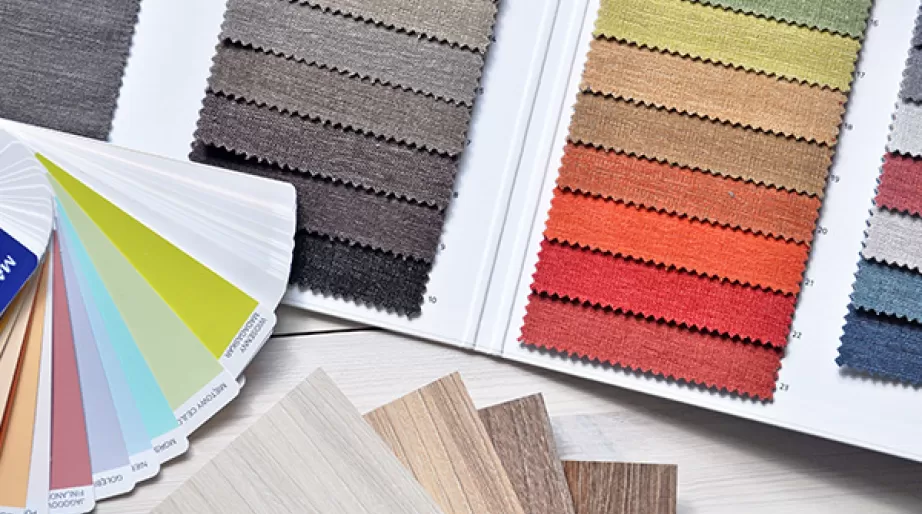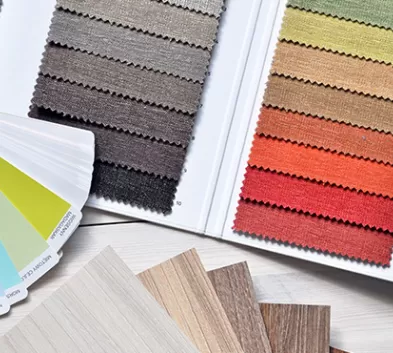Guide to Home Renovation Costs in Singapore and Budget Tips


You’ve made it through the easy part of adulthood. Now, it’s time to take on one of the biggest expenditures in your lifetime - buying a new house. If the thought of what home renovation costs scares you, you’re not alone.
With so many decisions to make, factors you have to consider, hidden expenses to be aware of, and a family to please, the entire renovation process can be overwhelming. To make adulting a little easier and to help you stay within budget, here’s everything you need to know about the renovation cost and the average cost of home repairs in Singapore.
Home Renovation Costs in Singapore
There’s a lot to consider here. The short answer is, it depends on the size and extent of renovation required.
Just a ballpark figure, it can range anywhere from $20,000 for a super basic renovation of a 3-room flat to over $100,000 for a heavily renovated 5-room flat. If you’re renovating for a condo or landed property as a home, the average cost of repairs will be steeper.
For a more detailed computation, try out Qanvast’s renovation calculator.
Average Cost of HDB Home Renovations
|
Type of HDB |
Average Cost for a New Flat |
Average Cost for a Resale Flat |
|
3-Room (60 to 65 sqm) |
$32,000 |
$43,200 |
|
4-Room (90 sqm) |
$43,600 |
$56,000 |
|
5-Room (110 sqm) |
$52,300 |
$63,500 |
As you can see, you can expect to pay more per sqm for renovating a larger home. A resale flat also tends to be pricier than new flats.
Keep in mind, your final home renovation cost may not be even close to these averages. Simply because of fixtures, fittings, materials and labour expenses that could impact your estimations (and they often do).
Average Cost of Renovations Depending on Style
There are general styles you can choose from when redesigning your HDB flat and condo. In this table, we ranked the costs of home renovation in Singapore for some of the more common styles and design types.
|
Style |
Average Range |
Price Point |
|
Contemporary |
$70,000 - $90,000 |
High |
|
Scandinavian |
$65,000 - $90,000 |
High |
|
Eclectic |
$65,000 - $80,000 |
High |
|
Vintage |
$60,000 - $75,000 |
Medium |
|
Minimalist |
$60,000 - $75,000 |
Medium |
|
Modern |
$60,000 - $75,000 |
Medium |
|
Transitional |
$55,000 - $85,000 |
Medium |
|
Industrial |
$50,000 - $80,000 |
Low |
|
Traditional |
$40,000 - $75,000 |
Low |
*These are averages and rates vary for different contractors in Singapore.
After choosing the style for your home, it’s time to drill down on the numbers and other details you’ll need to take note of when renovating your new home.
What are the factors that affect the cost of home renovation in Singapore?
If you’re a first-time homeowner, you might not be aware of all the associated costs. Costs usually depend on:
- Property Size and Status: Is it an HDB, condo or landed property? Is it new or is it a resale? Does it come with existing fittings or do you need to install them?
- Type of Work Needed: How much work needs to be done; hacking versus building from scratch?
- Finishes and Materials: Opting for expensive finishes and materials such as marble countertops could mean a much higher cost than ceramic.
- Who you want to hire: Different contractors and interior designers charge different fees and have different quality of work.
Also, the type and amount of work required will have to take into consideration the current condition of the property. The biggest renovation work expenses usually come from these three components:
Hacking: Hacking refers to the removal of any existing built-in furniture, walls, flooring or other structures. Demolition and disposal are required for this, that’s why it’s cheaper to get a new “blank canvas” flat.
Masonry: Pretty much anything cement related falls under this category. Whether it’s tiling floors or walls and building shower kerbs. More hacking usually means more masonry work is required. Bigger houses have more surface area to cover so more materials and man-hours are needed too.
Carpentry: Wooden wardrobes, kitchen cabinets, bookcases, TV consoles, you get the gist. Depending on the quality, intricacy of design and type of wood you choose, the price may vary.
Then, of course, there’s the size of the flat you need to renovate. Because there’s a multitude of different configurations, we narrowed it down to what it would cost to renovate an average-sized, 4-room HDB flat.
Average Home Renovation Cost for a 4-bedroom flat
Here’s an estimate of how much it would cost for a 4-room HDB flat in Singapore. We calculated based on a 90-square metre home since it represents the residence that majority of Singaporeans live in.
The calculation below includes renovation for:
- Living room
- Dining room
- Bedrooms
- Bathrooms
- Kitchen
|
Renovation Type |
Light Renovation Work |
Moderate Renovation Work |
Extensive Renovation Work |
|
Hacking |
$400 - $2,000 |
$2,000 - $3,600 |
$3,600 - $19,000 |
|
Masony |
$600 - $5,400 |
$5,400 - $15,400 |
$15,400 - $59,600 |
|
Carpentry |
$700 - $14,000 |
$14,400 - $22,600 |
$22,600 - $84,300 |
|
Ceiling & Partition |
$200 - $1,400 |
$1,400 - $2,300 |
$2,300 - $8,300 |
|
Plumbing |
$200 - $600 |
$600 - $1,300 |
$1,300 - $5,600 |
|
Electrical |
$300 - $1,700 |
$1,700 - $3,200 |
$3,200 - $7,700 |
|
Painting |
$200 - $1,400 |
$1,400 - $1,800 |
$1,800 - $4,100 |
|
Cleaning & Polishing |
$300 - $1,100 |
$1,100 - $1,700 |
$1,700 - $13,900 |
|
Total Average |
$15,550 |
$39,950 |
$127,200 |
Renovation costs can inflate with the extent of work needed. And this table hasn’t included the type of finish and material you choose for your walls, floors and other surfaces yet.
|
Surface Material |
Cost per square meter |
|
Marble |
$322 - $753 |
|
Vinyl |
$54 - $86 |
|
Laminate |
$64 - $86 |
|
Ceramic |
$32 - $129 |
|
Parquet |
$322 - $536 |
The bigger your house, the bigger your bill and the higher the maintenance cost. And don’t undermine the little increments.
$8 and $12 makes a whole lot of difference, especially if you’ve got 1,000 square metre to cover. Not forgetting installation fees, shipping fees (especially if materials are exotic) and transportation charges.
If you can’t decide which material is best for your home, ask a professional for advice.
Word of caution: Who you work with plays a huge role in the outcome of your home renovation too! Choosing the wrong type of vendor could result in unnecessary headaches.
Should you hire an Interior Designer (ID) or Contractor?
There’s a trade-off between the price you pay and the amount of involvement you have in the project. Both vendors will handle the actual renovation, but the value-added services they provide can be significantly different.
|
Work Required |
Contractor |
Interior Designer |
|
Design |
No |
Yes |
|
Conceptualising |
No |
Yes |
|
Sourcing for Materials |
Depends |
Yes |
|
Project Management |
No |
Yes |
Contractors
They focus only on the construction and the building. This means you have to manage the project schedule (which might stretch over an extended period unless you’re really on top of the timeline), design, conceptualising and some sourcing for materials.
This option is ideal for homeowners who already know the specific details of what they want, how they want it done, and where everything needs to go. If you go this route, you will probably need to take some time off work to oversee the work, but you will have full control over the creative process and managing the project. Be prepared for some heavy involvement!
Interior Designers (IDs)
These professionals, on the other hand, handle everything for you. From concept to design to sourcing and managing, they are your eyes, ears and feet on the ground. IDs will coordinate with the contractor and get all your interiors built beautifully and fittings installed perfectly.
If you’re busy or clueless about renovation and management, it would make sense to hire an interior designer so you can spend your time doing things you actually enjoy. You can provide your input and a good ID will recommend the best way to implement your ideas in the way that will satisfy you.
The downside to this is, IDs typically charge a consultancy fee on top of the cost of renovation and may include a markup beyond the actual cost of materials and labour. So, if you go this route, budget in these extra fees.
Renovation Budget Tips
It’s easy to go overboard with the renovations. Small expenses can add up and blow a huge hole in your bank. Here are some tips to make sure your renovation fees are within budget.
Prioritise your top renovation needs
The easiest way to stay on budget during a renovation is to know exactly what needs to be in the house. Create a list of everything you’d like and then separate them into wants and needs.
Ask yourself these questions:
- Are there any must-haves for your home?
- How about the nice-to-haves?
- What are you willing to splurge on?
- And what are you willing to compromise on?
Pro tip: Focus on the living area first. Jumping from room to room during the planning phase will only leave you frustrated and overwhelmed. Start with the area where you will be spending the most time. This place should serve as the focus of your energy and investment.
The next step is to build a spreadsheet that includes each portion of the home renovation project with the estimated costs.
Consider the following:
- Labour and consultancy fees
- Fixtures and finishes (For example, paint, knobs, handles, faucets, doors. Don’t forget shipping)
- Appliances (For example, lights, fans, air conditioning, pots and pans. Don’t forget installation fees)
Once you create a detailed enough plan that includes all the specifications, colours, finishes and fixtures, your conversation with your contractors and designers can go a lot smoother and your house can be ready faster.
Research and compare: Know the cost versus value of each home renovation project
As much as we would love to be surrounded by luxury, most of us can’t afford Egyptian silk curtains and gold plated taps. One good way to balance our renovation budget is to differentiate between premium and economical finishes.
Instead of pricey marble kitchen tops, why not use that money to get a good quality stove that will make cooking meals a lot more enjoyable for years to come?
When sourcing for quotes, don’t stop at the first three you find online either. Ask your friends and family members for vendors they’ve engaged before and fittings they use. Chances are, you’ll be able to find some really trustworthy ones that can beautify your home without breaking your bank.
When choosing a vendor:
- Conduct an interview and check their credentials
- Discuss how you will approach unforeseen circumstances and how it will affect your budget
- Find out their timeline, work process and make sure they understand your needs
Remember, a quote that is way too cheap is a warning sign! Don’t be penny-wise, pound foolish.
Decide on how you're going to finance the renovation
If you don’t have the money on hand, or someone who can spare you the cash, you will probably need to get external financing. Many homeowners take out a personal or renovation loan in order to make the renovation possible.
That leads us to the next part, protecting your home. Since you’re investing so much in your home, it only makes sense that you set up measures to protect it too.
With MSIG’s Enhanced HomePlus, losses or damages to your renovations, movable house items, household contents and personal belongings are covered up to a high limit of $270,000.
Create and Stick To a Budget
Creating a budget for a massive project that you’ve never done before can be challenging. Using the estimates in the tables above, you can get a rough idea of what your budget should be.
It’s best to set aside an extra 10 to 20% of your budget for miscellaneous and unforeseen expenses like moving fees and things going wrong.
By setting aside a little extra, not only will you think twice before spending, but you also know you will have funds available to finish the renovation no matter what happens.
DIY: Recycle items that are in good condition
Recycling items that are still in good condition can help you to rein in on your overall expenses and spend the money on the fundamentals in renovating your home. Instead of purchasing everything brand-new, pick up pre-loved items from flea markets or thrift shops.
These days there are also tons of options available online that can greatly reduce your spend on appliances and finishes.
Case in point: Refinishing or refacing existing cabinets can save you up to 30 percent compared with buying new cabinetry.
Cut unnecessary costs
Beware of the frills!
If you want to lessen the cost, forgo the unnecessary expenditures like:
- Platform beds
- Customised furniture
- Bathtubs
- Walk-in wardrobes
- Designer furniture
Be open to other cost-effective options instead. You can be smart about cutting expenses and still come up with a comfortably furnished place. If you don’t want to sacrifice price for workmanship, here are some ways to save money:
- Tackle small tasks yourself. You can reduce labour fees if you and your friends can do some of the work yourself. Such as moving furniture and deconstructing simple fixtures.
- Time it right. Obviously, the end of the year would be a busy time for everyone, so if you don’t want to end up paying a premium, choose an off-peak timing. You can save on the cost of renovation by ignoring superstition.
- Opt for lower-cost finishings. Instead of wooden cabinets, opt for laminates instead.
Wrapping it up
Now that we’ve covered the basics of home renovation and budgeting in Singapore, you won’t be at a complete loss any more with your new home!
Hopefully, this guide will help you plan and transform your home into a place of comfort, style and peace.
Now, the next thing to do is to make a checklist of your own and decide on your renovation plans!
- Decide how you want your new home to look
- Figure out which style and which materials you want
- Create a budget for your renovation costs
- Come up with a financing plan
- Research the vendors, approach friends and family
Finally, take it step by step and enjoy the process. Good luck!


